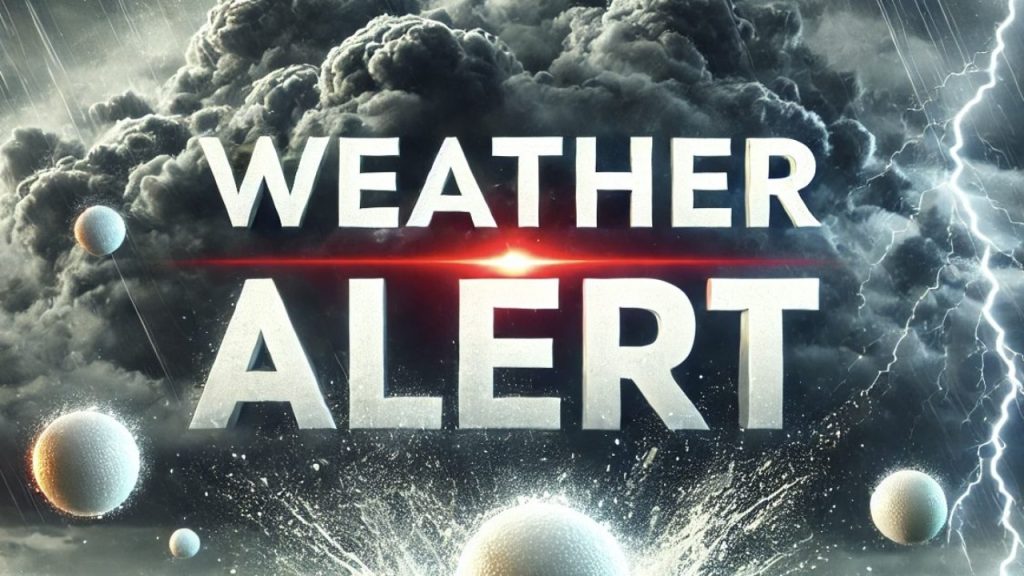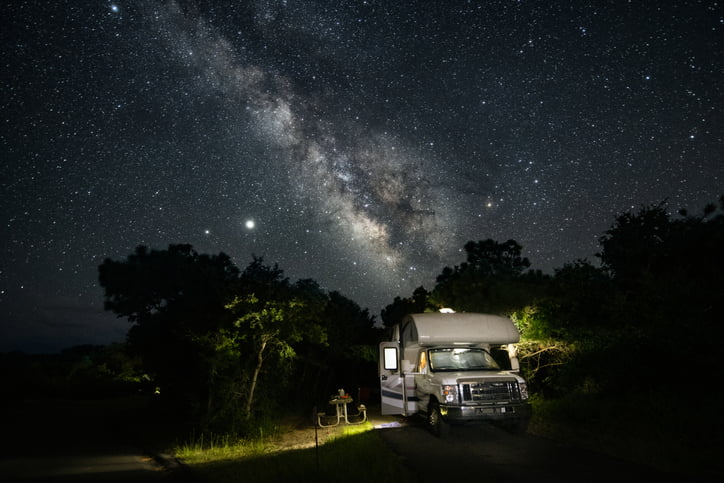Hey Illinois, listen up! If you’re planning on staying up late or getting a good night’s sleep, you might want to rethink it—severe thunderstorms are heading our way, and they’ll be rolling through after midnight on Tuesday. We’re talking damaging winds, large hail, intense lightning, and heavy rain that could bring flash flooding to parts of the state. The worst of the storm will be here between 1 AM and 5 AM, so it’s time to get prepared and make sure you’re ready. Here’s everything you need to know to stay safe and stay ahead of the storm.
What’s Coming?
This isn’t your average thunderstorm—this one’s packing some serious punch. Here’s a breakdown of the main threats:
1. Winds Up to 60 MPH
First up, those winds. Gusts up to 60 miles per hour could really do some damage. They’re strong enough to knock down trees, tear off shingles, and bring down power lines. If you’ve got anything outside, like patio furniture, bikes, or trash cans, make sure they’re secured or brought inside—flying debris is one of the biggest hazards in storms like this. And if you absolutely don’t need to be driving, it’s best to stay off the roads during the worst part of the storm.
2. Large Hail
Expect hail—and we’re not talking tiny pebbles here. The hailstones could be as large as quarters or bigger, which means they could seriously damage your car, your roof, or even your windows. If your vehicle’s parked outside, move it into a garage or sheltered area as soon as you can. If you don’t have a garage, try to park under something sturdy to protect your car.
3. Intense Lightning
This storm will likely be lightning-heavy, which brings the risk of fires and power outages. Make sure to stay away from any electrical appliances or wired devices during the storm to stay safe. Frequent lightning is expected, and it could knock out power for some time, leaving you in the dark. Have a backup plan, like charging your phone or having a portable charger handy.
4. Flash Flooding
Heavy rainfall is expected, which could lead to flash flooding—especially in places that already have drainage problems. Flash floods can develop fast, so if you’re in a low-lying area, near a river, or anywhere that’s prone to flooding, make sure you’re paying attention to rising water. Don’t drive through flooded streets, even if they don’t seem too deep—it only takes a small amount of water to make your car lose control.
When Will It Hit?
Timing is everything, and these storms aren’t going to waste any time. The worst of it will come through after midnight on Tuesday, and we’re talking about a short but intense window between 1 AM and 5 AM. The fact that this storm is happening overnight makes it even more dangerous—many of us will be asleep when it hits, so you’ll need to be prepared before you head to bed.
What You Need to Do Now:
Here’s how to get ready, right now:
1. Charge Your Devices
We all know how important our phones are, especially during storms. Power outages are highly likely with high winds and lightning, so make sure your phone is fully charged before the storm hits. It’s also a good idea to have a portable charger on hand so you’re not scrambling to find power if you lose electricity.
2. Secure Outdoor Items
The high winds can turn almost anything into a flying hazard, so take a few minutes now to bring in or secure anything that could get blown around. Trash cans, lawn furniture, bikes—anything that’s not tied down could become a projectile. Better safe than sorry, right?
3. Stay Informed
Since this storm is coming at night, make sure you have a way to stay updated. Set your phone to receive weather alerts, or use a NOAA weather radio so you can get real-time warnings even while you sleep. This way, if there’s a tornado warning or if the storm intensifies, you’ll know right away.
4. Stay Inside When the Storm Hits
Once the storm rolls in, stay indoors! Don’t drive if you don’t have to—the roads will get dangerous with heavy rain, high winds, and possibly fallen trees or power lines. If you’re already on the road, find a safe place to pull over, preferably somewhere away from trees or overpasses. It’s better to wait it out safely than risk driving through the storm.
5. Protect Your Vehicle
If your car’s outside, it’s a good idea to move it into a garage or sheltered area as soon as you can. If that’s not an option, park your car away from trees or anything that could fall and damage it. Large hail can damage vehicles quickly, so make sure your car is protected before the storm hits.
After the Storm: What to Expect
By 5 AM, the worst of the storm should have passed, but that doesn’t mean things will immediately go back to normal. Power outages are likely, especially if the storm knocks out power lines or damages electrical equipment. Crews will be working to restore power, but it could take some time, so be patient. If you live in a flood-prone area, keep an eye on the water levels even after the rain stops, as flash flooding can continue after the storm has passed.
Illinois, this storm is definitely one you don’t want to ignore. With winds up to 60 MPH, large hail, intense lightning, and the risk of flash flooding, it’s not just another thunderstorm—it’s a serious weather event that could cause damage and disruption. But if you stay prepared and take a few precautions, you’ll be in a much better place to weather the storm safely.



